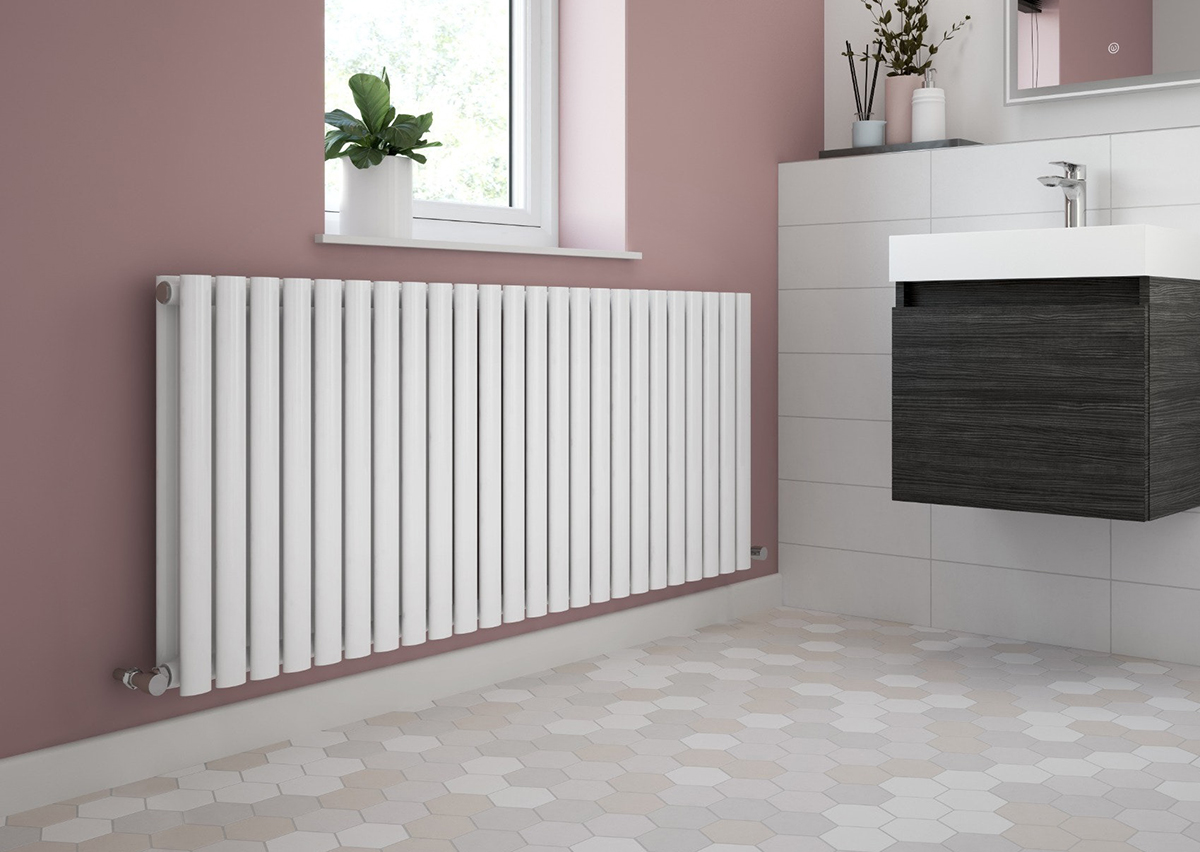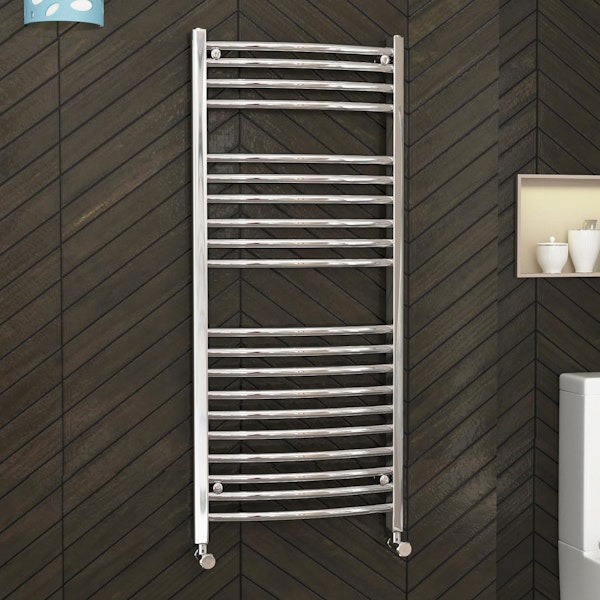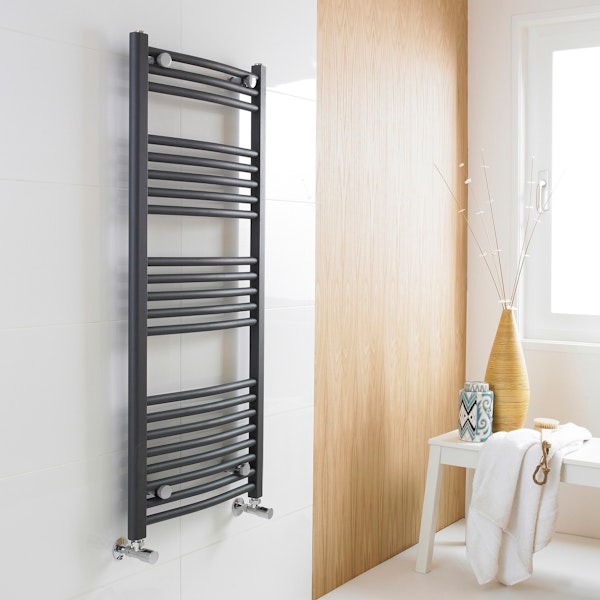
A heated towel rail is an excellent addition to any bathroom upgrade. It provides warmth, comfort, and the added luxury of cosy and toasty towels!
Another perk is that installing a heated towel rail is a fairly straightforward process that can be accomplished with a few basic tools and some careful planning.
In this installation guide, we’ll explore the benefits of a heated towel rail, discuss how to choose the right one for your bathroom and provide step-by-step instructions on installation. We will also discuss tips for its maintenance and care to help with your DIY home improvement ideas.


Choosing the Right-Heated Towel Rail:
It’s important to choose the right heated towel rail for your bathroom space and personal requirements.
Types of Heated Towel Rails:
As with any bathroom heating, there are a few different types to consider when choosing a heated towel rail.
These include electric, hydronic, and dual-fuel options.
Factors to Consider When Selecting a Towel Rail:
There are other factors to be taken into account when selecting your towel rail too.
For example, considering the size of your bathroom and the available wall space is key to ensuring your new heated towel rail fits properly.
Is it Expensive to Run a Heated Towel Rail?
The cost of running a heated towel rail depends on a few factors such as the type of towel rail, its heat output, and usage patterns.
Electric towel rails generally have higher running costs compared to hydronic towel rails that are connected to the central heating system.
Overall, when compared to traditional bathroom heating solutions, a heated towel rail is a far more economical choice.
Tools and Materials Needed:
Read on for everything you will need to install a heated towel rail in your bathroom.
List of Tools and Materials:
Your toolkit for this job should typically consist of:
- Measuring tape
- Spirit level
- Pencil
- Drill and drill bits
- Screwdriver
- Pipe Cutter or Wrench (if plumbing connection is required)
- A Suitable Mounting Kit or Brackets (Which should be provided with the towel rail)
Precautions and Safety Tips:
Safety is the main priority during any installation.
Before starting any work, ensure you shut off the power supply (and the water supply if necessary) for the area you’re working in.


Preparing for Installation:
Thorough preparation of the installation area is a good idea before you start the process.
Determining the Location of the Towel Rail:
Firstly, before installing the heated towel rail, you need to decide on the ideal location for it in your bathroom. Consider factors such as accessibility and the desired height for convenient use.
Shutting off Power and Water:
Don’t forget, it’s essential to shut off the power and water supply to the installation area before you start any work.
Installing the Heated Towel Rail:
Follow our Step by Step Instructions for a Successful Installation:
Mounting the Brackets:
- Measuring and Marking the Wall:
Begin by measuring and marking the wall according to the specifications provided by the manufacturer. This step ensures the accurate placement of the brackets. - Drilling Holes and Securing the Brackets:
Next, using a drill and the appropriate drill bits, create holes in the marked spots on the wall. Then, securely attach the brackets to the wall using the screws provided with the towel rail.
Attaching the Heated Towel Rail:
- Aligning the Towel Rail With the Brackets
Carefully align the heated towel rail with the installed brackets. Make sure the rail is positioned correctly and levelled before proceeding to the next step. - Securing the Towel Rail to the Brackets
Once aligned, securely fasten the heated towel rail to the brackets using the provided screws or mounting hardware. Ensure that the towel rail is tightly attached to the brackets to prevent any wobbling or instability.
Connecting the Power and/or Water Supply:
- Electrical Connection:
If your towel rail requires an electrical connection, follow the manufacturer's instructions for wiring it to a nearby power source. - Plumbing Connection
For towel rails that require a connection to your water supply - we recommend you consult a professional plumber to ensure a safe connection.
This step involves connecting the towel rail to the existing hot water system or adding a separate hot water line.
Finishing Touches and Maintenance:
Testing the Heated Towel Rail:
After installation, it's important to test the functionality of your new heated towel rail.
To do this, turn on the power and check if the rail heats up as expected. If there are any issues or malfunctions, refer to the manufacturer's troubleshooting guide or seek professional assistance.
Tips for Maintaining and Cleaning your Towel Rail:
To keep your heated towel rail in optimal condition, clean it regularly with a soft cloth and mild detergent.
What is the Difference Between a Towel Rail and a Towel Warmer?
While the terms "towel rail" and "towel warmer" are often used interchangeably, they can have slight variations in how they work.
A towel rail typically refers to a fixed unit attached to the wall, providing a place to hang towels for warming or drying.
Whilst a towel warmer installation can encompass both wall-mounted and freestanding units that offer heating elements that warm your towels.


Conclusion
A heated towel rail installation can add a touch of luxury and functionality to your bathroom.
By choosing the right towel rail, following our installation steps, and maintaining your towel rail properly, you can create a stylish and comfortable bathroom environment and enjoy warm and cosy towels for many years to come!
